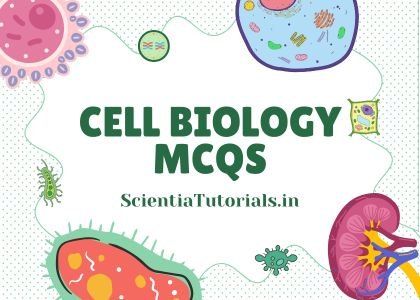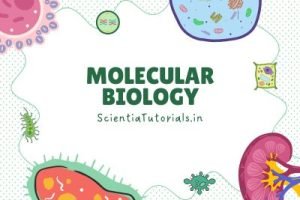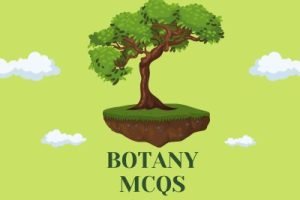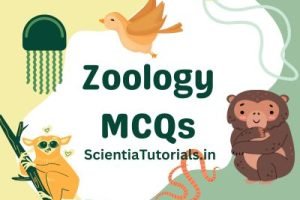
Cell Biology MCQs
🧫 Cell Biology MCQs – Part 1 (Q1–Q25)
Q1. The basic unit of life is the:
A) Organelle
B) Tissue
C) Cell
D) Organ
✅ Answer: C) Cell
Explanation: The cell is the smallest unit that carries out life processes. Tissues, organs, and organelles are higher or subcellular levels, not standalone living units.
Q2. The fluid mosaic model describes the:
A) Cytoskeleton
B) Plasma membrane
C) Cell wall
D) Nuclear envelope
✅ Answer: B) Plasma membrane
Explanation: It depicts a phospholipid bilayer with proteins moving laterally. Cytoskeleton and cell wall are separate structures; the nuclear envelope is a double membrane with pores.
Q3. Which organelle is the major site of ATP production in eukaryotic cells?
A) Lysosome
B) Mitochondrion
C) Peroxisome
D) Golgi apparatus
✅ Answer: B) Mitochondrion
Explanation: Oxidative phosphorylation occurs on the inner mitochondrial membrane. Lysosomes digest, peroxisomes oxidize fatty acids, Golgi modifies/ships proteins.
Q4. Ribosomes are the site of:
A) DNA replication
B) Protein synthesis
C) Lipid synthesis
D) ATP synthesis
✅ Answer: B) Protein synthesis
Explanation: Ribosomes translate mRNA into polypeptides. DNA replication occurs in nucleus/mitochondria, lipids in smooth ER, ATP mainly in mitochondria.
Q5. Smooth endoplasmic reticulum (SER) primarily functions in:
A) Protein synthesis for secretion
B) Lipid synthesis and detoxification
C) DNA packaging
D) Lysosomal enzyme storage
✅ Answer: B) Lipid synthesis and detoxification
Explanation: SER synthesizes lipids, steroids, and detoxifies drugs. RER (not SER) makes secreted/membrane proteins.
Q6. The Golgi apparatus is chiefly responsible for:
A) Glycolysis
B) Protein modification and sorting
C) Fatty acid β-oxidation
D) DNA repair
✅ Answer: B) Protein modification and sorting
Explanation: It glycosylates, sulfates, and sorts proteins/lipids. Glycolysis is cytosolic; β-oxidation mainly peroxisomes/mitochondria.
Q7. Which structure provides rigidity to plant cells but is absent in animal cells?
A) Cell wall (cellulose)
B) Plasma membrane
C) Mitochondria
D) Ribosomes
✅ Answer: A) Cell wall (cellulose)
Explanation: Plant/fungal/bacterial cell walls provide support. Animals lack cell walls (have ECM instead). All cells have membranes, ribosomes; mitochondria are eukaryotic.
Q8. Which organelle contains hydrolytic enzymes active at acidic pH?
A) Peroxisome
B) Lysosome
C) Nucleolus
D) Chloroplast
✅ Answer: B) Lysosome
Explanation: Lysosomes degrade macromolecules at ~pH 5. Peroxisomes use oxidases/catalase; nucleolus makes rRNA; chloroplasts do photosynthesis.
Q9. Microtubules are composed of:
A) Actin monomers
B) Tubulin dimers (α/β)
C) Intermediate filament proteins
D) Collagen trimers
✅ Answer: B) Tubulin dimers (α/β)
Explanation: Microtubules = hollow polymers of tubulin. Actin forms microfilaments; intermediate filaments are keratins, vimentin, etc.; collagen is extracellular.
Q10. The motor protein that moves vesicles toward the microtubule plus-end is typically:
A) Dynein
B) Myosin I
C) Kinesin
D) Myosin II
✅ Answer: C) Kinesin
Explanation: Kinesins are generally plus-end directed; dynein moves to minus-end. Myosins act on actin, not microtubules.
Q11. Which junction prevents paracellular flow between epithelial cells?
A) Desmosome
B) Hemidesmosome
C) Tight junction (zonula occludens)
D) Gap junction
✅ Answer: C) Tight junction
Explanation: Tight junctions seal intercellular space. Desmosomes/hemidesmosomes anchor; gap junctions allow communication.
Q12. The nucleolus is the site of:
A) mRNA splicing
B) Ribosomal RNA transcription and ribosome assembly
C) DNA replication
D) Protein glycosylation
✅ Answer: B) rRNA transcription and ribosome assembly
Explanation: Nucleoli assemble rRNA with ribosomal proteins. mRNA splicing occurs in nucleoplasm.
Q13. Which organelle initiates the intrinsic pathway of apoptosis via cytochrome c release?
A) Lysosome
B) Peroxisome
C) Mitochondrion
D) Endosome
✅ Answer: C) Mitochondrion
Explanation: Mitochondrial outer membrane permeabilization releases cytochrome c → apoptosome. Others aren’t central to this trigger.
Q14. Aquaporins primarily facilitate:
A) Active ion pumping
B) Passive water transport
C) Glucose uptake
D) Endocytosis
✅ Answer: B) Passive water transport
Explanation: Aquaporins are water channels; ion pumps need ATP; glucose via GLUT/SGLT; endocytosis is vesicular.
Q15. Cholesterol in the plasma membrane mainly:
A) Makes membranes impermeable to gases
B) Increases membrane fluidity at low temperature and decreases it at high temperature
C) Replaces phospholipids
D) Forms pores
✅ Answer: B)
Explanation: Cholesterol buffers fluidity across temperatures. It doesn’t form pores or replace bulk lipids.
Q16. Na⁺/K⁺-ATPase transports ions per cycle as:
A) 3 K⁺ out, 2 Na⁺ in
B) 3 Na⁺ in, 2 K⁺ out
C) 3 Na⁺ out, 2 K⁺ in
D) 2 Na⁺ out, 3 K⁺ in
✅ Answer: C) 3 Na⁺ out, 2 K⁺ in
Explanation: Maintains gradients using ATP. Other ratios are incorrect.
Q17. Clathrin is best known for its role in:
A) Nuclear export
B) Clathrin-coated vesicle formation in endocytosis
C) Microfilament branching
D) Peroxisome biogenesis
✅ Answer: B)
Explanation: Clathrin triskelions form coated pits/vesicles. Nuclear export uses exportins; actin branching uses Arp2/3.
Q18. The S phase of the eukaryotic cell cycle is when:
A) Chromosomes segregate
B) DNA is replicated
C) Cytokinesis occurs
D) Cell growth ceases
✅ Answer: B) DNA is replicated
Explanation: S = DNA synthesis. Segregation/cytokinesis in M phase; growth in G1/G2.
Q19. Cyclins control the cell cycle by:
A) Degrading DNA
B) Activating cyclin-dependent kinases (CDKs)
C) Building microtubules
D) Pumping calcium
✅ Answer: B) Activating CDKs
Explanation: Cyclin–CDK complexes phosphorylate targets to drive phase transitions.
Q20. A hallmark feature of mitochondria and chloroplasts supporting endosymbiotic origin is:
A) Lack of DNA
B) Linear chromosomes
C) 70S ribosomes and circular DNA
D) Absence of membranes
✅ Answer: C)
Explanation: Both have circular DNA and 70S ribosomes like bacteria. They have double membranes, not absent.
Q21. Peroxisomes are most directly involved in:
A) Glycolysis
B) β-oxidation of very long–chain fatty acids and detoxification of H₂O₂
C) Oxidative phosphorylation
D) Protein glycosylation
✅ Answer: B)
Explanation: Peroxisomes house oxidases/catalase. Glycolysis is cytosolic; OxPhos in mitochondria; glycosylation in ER/Golgi.
Q22. Which microscopy technique provides detailed surface topography at high resolution?
A) Bright-field light microscopy
B) Transmission electron microscopy (TEM)
C) Scanning electron microscopy (SEM)
D) Phase-contrast microscopy
✅ Answer: C) SEM
Explanation: SEM images surfaces; TEM images internal ultrastructure.
Q23. Immunofluorescence detects specific proteins by using:
A) DNA probes
B) Radiolabeled nucleotides
C) Antibodies conjugated to fluorophores
D) Enzyme substrates only
✅ Answer: C)
Explanation: Fluorophore-tagged antibodies bind target proteins. DNA probes are for nucleic acids.
Q24. Microfilaments primarily:
A) Form the mitotic spindle
B) Provide tensile strength in the ECM
C) Drive cell motility and shape via actin
D) Form nuclear lamina
✅ Answer: C)
Explanation: Actin filaments enable lamellipodia, microvilli, cytokinesis. Spindle is microtubules; lamina = intermediate filaments (lamins); ECM collagen gives tensile strength.
Q25. Proteins destined for secretion enter the endomembrane system via:
A) Free cytosolic ribosomes and post-translational import into ER
B) Mitochondrial ribosomes
C) Co-translational translocation into rough ER via signal peptide and SRP
D) Nuclear pores
✅ Answer: C)
Explanation: Signal peptide–SRP targets ribosome–nascent chain to RER for co-translational entry. Most secreted proteins are not post-translationally imported.
🧫 Cell Biology MCQs – Part 2 (Q26–Q50)
Q26. Which organelle is known as the “suicidal bag” of the cell?
A) Nucleus
B) Lysosome
C) Golgi body
D) Peroxisome
✅ Answer: B) Lysosome
Explanation: Lysosomes contain hydrolytic enzymes that can digest cell components during autolysis.
Q27. The cytoskeleton is composed of:
A) Actin filaments, microtubules, intermediate filaments
B) Ribosomes, lysosomes, peroxisomes
C) DNA, RNA, histones
D) Collagen, elastin, keratin
✅ Answer: A)
Explanation: Cytoskeleton = actin (microfilaments), tubulin (microtubules), keratin/vimentin (intermediate filaments).
Q28. The “powerhouse of the cell” refers to:
A) Chloroplast
B) Ribosome
C) Mitochondrion
D) Nucleus
✅ Answer: C) Mitochondrion
Explanation: Mitochondria produce most ATP by oxidative phosphorylation.
Q29. Which structure is absent in prokaryotes?
A) Plasma membrane
B) Nucleoid
C) Membrane-bound nucleus
D) Ribosomes
✅ Answer: C) Membrane-bound nucleus
Explanation: Prokaryotes have DNA in nucleoid, but no true nucleus.
Q30. Centrioles are important for:
A) Photosynthesis
B) Chromosome segregation via spindle formation
C) RNA splicing
D) Protein synthesis
✅ Answer: B) Chromosome segregation
Explanation: Centrioles organize microtubules for mitotic spindle.
Q31. Which cellular organelle is involved in glycosylation of proteins?
A) Nucleus
B) Rough ER and Golgi
C) Lysosome
D) Ribosome
✅ Answer: B)
Explanation: N-linked glycosylation starts in ER, completed in Golgi.
Q32. The largest organelle in animal cells is usually:
A) Nucleus
B) Mitochondrion
C) Lysosome
D) Golgi apparatus
✅ Answer: A) Nucleus
Explanation: Nucleus is the largest compartment, controlling gene expression.
Q33. Which phase of mitosis do chromosomes align at the equatorial plate?
A) Prophase
B) Metaphase
C) Anaphase
D) Telophase
✅ Answer: B) Metaphase
Explanation: Chromosomes line up at the metaphase plate before separation.
Q34. In which phase of mitosis do sister chromatids separate?
A) Prophase
B) Metaphase
C) Anaphase
D) Telophase
✅ Answer: C) Anaphase
Explanation: Cohesins are cleaved, chromatids pulled to opposite poles.
Q35. Cytokinesis in animal cells occurs by:
A) Cell plate formation
B) Cleavage furrow formation by actin filaments
C) Spindle elongation
D) Microtubule sliding
✅ Answer: B) Cleavage furrow
Explanation: Actin–myosin contractile ring pinches the cell into two.
Q36. Which structure anchors plant cells together?
A) Gap junctions
B) Tight junctions
C) Plasmodesmata
D) Middle lamella
✅ Answer: D) Middle lamella
Explanation: Middle lamella (pectin-rich) cements plant cells together.
Q37. Which organelle is semi-autonomous and has its own DNA and ribosomes?
A) Lysosome
B) Golgi
C) Mitochondrion and chloroplast
D) Peroxisome
✅ Answer: C)
Explanation: Both mitochondria & chloroplasts have circular DNA, 70S ribosomes, supporting endosymbiotic origin.
Q38. The nuclear envelope is continuous with:
A) Plasma membrane
B) Rough ER
C) Golgi apparatus
D) Lysosome
✅ Answer: B) Rough ER
Explanation: The outer nuclear membrane is continuous with RER.
Q39. Histones are rich in:
A) Acidic amino acids
B) Basic amino acids (lysine, arginine)
C) Nonpolar amino acids
D) Aromatic amino acids
✅ Answer: B) Basic amino acids
Explanation: Histones bind negatively charged DNA using positively charged residues.
Q40. Nucleosomes are composed of:
A) DNA wrapped around histone octamer
B) RNA polymerase and DNA
C) Ribosomal RNA and proteins
D) DNA and non-histone proteins
✅ Answer: A)
Explanation: 146 bp of DNA wrapped around histone core (H2A, H2B, H3, H4).
Q41. Which cell organelle is called the “protein factory”?
A) Mitochondria
B) Ribosomes
C) ER
D) Golgi
✅ Answer: B) Ribosomes
Explanation: Ribosomes translate mRNA → protein.
Q42. Which cytoskeletal element is most stable and provides mechanical strength?
A) Microfilaments
B) Microtubules
C) Intermediate filaments
D) Actin bundles
✅ Answer: C) Intermediate filaments
Explanation: Provide tensile strength (e.g., keratins, lamins).
Q43. The spindle fibers are mainly made up of:
A) Microfilaments
B) Microtubules
C) Intermediate filaments
D) Myosin filaments
✅ Answer: B) Microtubules
Explanation: Spindle fibers = tubulin-based microtubules.
Q44. The matrix of mitochondria contains enzymes for:
A) Glycolysis
B) Krebs cycle
C) Electron transport chain
D) Photosynthesis
✅ Answer: B) Krebs cycle
Explanation: Enzymes of TCA cycle are in mitochondrial matrix. ETC is in inner membrane.
Q45. Which part of the chloroplast contains chlorophyll pigments?
A) Stroma
B) Thylakoid membranes
C) Outer membrane
D) Inner membrane
✅ Answer: B) Thylakoid membranes
Explanation: Chlorophyll is embedded in thylakoid membranes.
Q46. Which cell organelle plays a role in photorespiration?
A) Chloroplast
B) Peroxisome
C) Mitochondrion
D) Both chloroplast and peroxisome
✅ Answer: D) Both chloroplast and peroxisome
Explanation: Photorespiration involves chloroplast, peroxisome, mitochondrion.
Q47. The organelle responsible for formation of spindle apparatus in animals is:
A) Golgi apparatus
B) Centriole
C) Ribosome
D) Peroxisome
✅ Answer: B) Centriole
Explanation: Centrioles organize microtubules for spindle.
Q48. The main function of peroxisomes is to:
A) Produce ATP
B) Detoxify hydrogen peroxide using catalase
C) Digest proteins
D) Synthesize hormones
✅ Answer: B)
Explanation: Peroxisomes contain catalase that breaks down H₂O₂.
Q49. The G1 checkpoint in the cell cycle checks for:
A) DNA damage and cell size before S phase
B) Chromosome alignment at metaphase
C) DNA replication completion
D) Cytokinesis
✅ Answer: A)
Explanation: G1 checkpoint ensures cell is ready for DNA replication.
Q50. The spindle checkpoint (metaphase checkpoint) ensures that:
A) Cytokinesis is completed
B) Chromosomes are correctly attached to spindle before separation
C) DNA replication is complete
D) Apoptosis is triggered
✅ Answer: B)
Explanation: Prevents anaphase until all kinetochores are attached to spindle microtubules.
🧫 Cell Biology MCQs – Part 3 (Q51–Q75)
Q51. Which structure regulates the movement of molecules between nucleus and cytoplasm?
A) Nuclear pores
B) Nucleolus
C) Nuclear lamina
D) Chromatin
✅ Answer: A) Nuclear pores
Explanation: Nuclear pore complexes selectively transport proteins, RNAs, and ribonucleoproteins.
Q52. Which phase of the cell cycle immediately follows mitosis?
A) G0 phase
B) G1 phase
C) S phase
D) G2 phase
✅ Answer: B) G1 phase
Explanation: After mitosis → cell enters G1 phase (growth, preparation for DNA replication).
Q53. Which organelle synthesizes steroid hormones?
A) Rough ER
B) Smooth ER
C) Mitochondria
D) Ribosomes
✅ Answer: B) Smooth ER
Explanation: SER synthesizes lipids and steroid hormones, detoxifies drugs.
Q54. The energy currency of the cell is:
A) DNA
B) ATP
C) NADH
D) FADH₂
✅ Answer: B) ATP
Explanation: ATP is the universal energy currency. NADH/FADH₂ are electron carriers.
Q55. Which organelle is responsible for packaging proteins into vesicles for secretion?
A) Golgi apparatus
B) Rough ER
C) Lysosome
D) Nucleus
✅ Answer: A) Golgi apparatus
Explanation: Golgi modifies, sorts, and packages proteins for secretion or delivery.
Q56. Which organelle is involved in autophagy?
A) Mitochondria
B) Lysosome
C) Peroxisome
D) Chloroplast
✅ Answer: B) Lysosome
Explanation: Lysosomes degrade damaged organelles via autophagy.
Q57. Which protein forms the contractile ring during cytokinesis in animal cells?
A) Tubulin
B) Actin
C) Keratin
D) Collagen
✅ Answer: B) Actin
Explanation: Actin–myosin filaments form a contractile ring to pinch the cell.
Q58. Which cellular structure is rich in hydrolytic enzymes?
A) Lysosome
B) Peroxisome
C) Vacuole
D) Endosome
✅ Answer: A) Lysosome
Explanation: Lysosomes contain acid hydrolases for digestion.
Q59. Which organelle in plants stores water, ions, and waste products?
A) Mitochondria
B) Chloroplast
C) Central vacuole
D) Lysosome
✅ Answer: C) Central vacuole
Explanation: Central vacuole regulates turgor pressure, storage, detoxification.
Q60. Which part of mitochondria houses the electron transport chain (ETC)?
A) Outer membrane
B) Inner membrane
C) Intermembrane space
D) Matrix
✅ Answer: B) Inner membrane
Explanation: ETC complexes are embedded in the inner mitochondrial membrane.
Q61. Which process occurs in the mitochondrial matrix?
A) Glycolysis
B) Citric acid (Krebs) cycle
C) Electron transport chain
D) Fermentation
✅ Answer: B) Citric acid cycle
Explanation: Enzymes of the Krebs cycle are present in the matrix.
Q62. Which cytoskeletal filament is important for vesicle transport?
A) Microtubules
B) Microfilaments
C) Intermediate filaments
D) Septins
✅ Answer: A) Microtubules
Explanation: Kinesin/dynein motor proteins transport vesicles along microtubules.
Q63. The site of glycolysis in eukaryotic cells is:
A) Mitochondrial matrix
B) Cytoplasm
C) Endoplasmic reticulum
D) Golgi apparatus
✅ Answer: B) Cytoplasm
Explanation: Glycolysis is a cytosolic pathway.
Q64. Apoptosis is characterized by:
A) Cell swelling and lysis
B) DNA fragmentation, membrane blebbing, cell shrinkage
C) Uncontrolled necrosis
D) Loss of ATP only
✅ Answer: B)
Explanation: Apoptosis = programmed cell death with distinct morphology.
Q65. Which organelle is the site of photosynthesis?
A) Chloroplast
B) Mitochondrion
C) Peroxisome
D) Vacuole
✅ Answer: A) Chloroplast
Explanation: Chloroplasts contain thylakoids with chlorophyll for photosynthesis.
Q66. Light reactions of photosynthesis occur in:
A) Stroma
B) Thylakoid membrane
C) Outer membrane
D) Cytoplasm
✅ Answer: B) Thylakoid membrane
Explanation: Photosystems and ETC in thylakoid membranes capture light energy.
Q67. Dark reactions (Calvin cycle) occur in:
A) Thylakoid membrane
B) Stroma
C) Cytoplasm
D) Inner membrane
✅ Answer: B) Stroma
Explanation: Calvin cycle enzymes are in the stroma of chloroplasts.
Q68. The 9+2 arrangement of microtubules is found in:
A) Centrioles
B) Cilia and flagella
C) Spindle fibers
D) Nuclear pores
✅ Answer: B) Cilia and flagella
Explanation: Axoneme of cilia/flagella has 9 doublets + 2 central microtubules.
Q69. The main component of bacterial cell wall is:
A) Cellulose
B) Peptidoglycan
C) Chitin
D) Lignin
✅ Answer: B) Peptidoglycan
Explanation: Bacterial cell wall = peptidoglycan (murein).
Q70. Gram-positive bacteria are characterized by:
A) Thin peptidoglycan + outer membrane
B) Thick peptidoglycan, no outer membrane
C) Presence of LPS
D) Absence of cell wall
✅ Answer: B)
Explanation: Gram+ bacteria → thick peptidoglycan, stain purple, no LPS.
Q71. Gram-negative bacteria differ because they have:
A) Teichoic acids
B) Outer membrane with lipopolysaccharide (LPS)
C) Thick peptidoglycan
D) Sterols in membrane
✅ Answer: B)
Explanation: Gram– bacteria → thin peptidoglycan + outer LPS layer.
Q72. The nucleoid region in prokaryotes contains:
A) Histone-wrapped DNA
B) Linear chromosomes
C) Circular DNA without histones (mostly)
D) mRNA and tRNA only
✅ Answer: C)
Explanation: Prokaryotes have single circular DNA with little/no histones.
Q73. Which organelle is the site of fatty acid β-oxidation?
A) Lysosome
B) Mitochondria and peroxisomes
C) Golgi apparatus
D) Ribosome
✅ Answer: B)
Explanation: Mitochondria (medium-chain FA) and peroxisomes (very long-chain FA) carry out β-oxidation.
Q74. Which organelle in animal cells is responsible for detoxification of drugs and poisons?
A) Lysosome
B) Smooth ER
C) Golgi apparatus
D) Nucleus
✅ Answer: B) Smooth ER
Explanation: SER detoxifies via cytochrome P450 enzymes.
Q75. The cell cycle checkpoint ensuring DNA replication is completed occurs at:
A) G1 checkpoint
B) G2 checkpoint
C) Spindle checkpoint
D) Cytokinesis
✅ Answer: B) G2 checkpoint
Explanation: G2 ensures DNA replication finished before entering mitosis.
🧫 Cell Biology MCQs – Part 4 (Q76–Q100)
Q76. Which phase of the cell cycle involves division of the nucleus?
A) G1 phase
B) S phase
C) G2 phase
D) M phase
✅ Answer: D) M phase
Explanation: The mitotic (M) phase includes karyokinesis (nuclear division) and cytokinesis.
Q77. The protein tubulin polymerizes to form:
A) Microfilaments
B) Microtubules
C) Intermediate filaments
D) Actin bundles
✅ Answer: B) Microtubules
Explanation: α/β-tubulin dimers assemble into hollow microtubules.
Q78. The primary function of gap junctions is:
A) Mechanical adhesion
B) Preventing leakage between cells
C) Cell-to-cell communication via ions and small molecules
D) Anchoring to basement membrane
✅ Answer: C) Communication
Explanation: Gap junctions (connexons) allow electrical and metabolic coupling between cells.
Q79. Which enzyme unwinds the DNA helix during replication?
A) Ligase
B) Helicase
C) Primase
D) Topoisomerase I
✅ Answer: B) Helicase
Explanation: Helicase separates strands; topoisomerase relieves supercoils; primase lays primers.
Q80. Which organelle is responsible for protein glycosylation and sorting?
A) Ribosome
B) Golgi apparatus
C) Smooth ER
D) Peroxisome
✅ Answer: B) Golgi apparatus
Explanation: Golgi adds carbohydrates, sulfates, and sorts proteins for secretion/lysosomes.
Q81. Which organelle is abundant in liver cells for detoxification?
A) Rough ER
B) Smooth ER
C) Lysosome
D) Peroxisome
✅ Answer: B) Smooth ER
Explanation: SER detoxifies drugs using enzymes (cytochrome P450).
Q82. Centrosomes are composed of:
A) A pair of centrioles and pericentriolar material
B) Microfilament bundles
C) Intermediate filament proteins
D) Golgi vesicles
✅ Answer: A)
Explanation: Centrosome = two centrioles at right angles + PCM, microtubule organizing center.
Q83. Which cytoskeletal element forms the nuclear lamina?
A) Microfilaments
B) Intermediate filaments
C) Microtubules
D) Collagen
✅ Answer: B) Intermediate filaments
Explanation: Nuclear lamina made of lamins (IF proteins).
Q84. Which structure controls osmotic balance in freshwater protists like Paramecium?
A) Food vacuole
B) Lysosome
C) Contractile vacuole
D) Central vacuole
✅ Answer: C) Contractile vacuole
Explanation: Actively expels excess water to prevent bursting.
Q85. The term “chromatin” refers to:
A) Only condensed chromosomes
B) DNA + histone proteins complex in nucleus
C) Ribosomal RNA
D) Cytosolic DNA fragments
✅ Answer: B)
Explanation: Chromatin = DNA + histone + non-histone proteins.
Q86. Euchromatin is characterized by:
A) Highly condensed and transcriptionally inactive
B) Loosely packed and transcriptionally active
C) DNA found only during mitosis
D) DNA tightly bound to nucleolus
✅ Answer: B)
Explanation: Euchromatin = active, loosely packed; heterochromatin = condensed, silent.
Q87. Which organelle is the main site of N-linked glycosylation initiation?
A) Golgi
B) Rough ER
C) Lysosome
D) Smooth ER
✅ Answer: B) Rough ER
Explanation: N-linked glycosylation begins in ER, modified in Golgi.
Q88. The Endosymbiotic Theory explains the origin of:
A) Nucleus and ER
B) Ribosomes
C) Mitochondria and chloroplasts
D) Lysosomes
✅ Answer: C)
Explanation: Both share features with prokaryotes: circular DNA, 70S ribosomes, double membranes.
Q89. The contractile ring during cytokinesis is composed of:
A) Tubulin
B) Actin and myosin
C) Keratin
D) Dynein
✅ Answer: B) Actin and myosin
Explanation: Ring of actin–myosin filaments pinches animal cells.
Q90. Plant cells divide by:
A) Cleavage furrow
B) Cell plate formation from vesicles
C) Microfilament contraction
D) Spindle fiber constriction
✅ Answer: B) Cell plate formation
Explanation: Vesicles from Golgi fuse at equator → cell plate → new cell wall.
Q91. The organelle responsible for β-oxidation of very long–chain fatty acids is:
A) Lysosome
B) Peroxisome
C) Mitochondrion
D) Golgi
✅ Answer: B) Peroxisome
Explanation: Peroxisomes handle very long-chain FA, mitochondria handle medium-chain FA.
Q92. Which organelle is called the “cell’s post office”?
A) Golgi apparatus
B) Ribosome
C) Lysosome
D) ER
✅ Answer: A) Golgi apparatus
Explanation: It sorts, modifies, and dispatches proteins.
Q93. Which of the following is NOT a component of the cytoskeleton?
A) Actin filaments
B) Microtubules
C) Intermediate filaments
D) Endoplasmic reticulum
✅ Answer: D) Endoplasmic reticulum
Explanation: ER is part of endomembrane system, not cytoskeleton.
Q94. Which junction allows ions and small molecules to directly pass between animal cells?
A) Tight junction
B) Gap junction
C) Desmosome
D) Plasmodesmata
✅ Answer: B) Gap junction
Explanation: Formed by connexons, gap junctions enable electrical/chemical coupling.
Q95. Which organelle produces lysosomal enzymes?
A) Lysosome itself
B) Rough ER → Golgi
C) Smooth ER
D) Peroxisome
✅ Answer: B) Rough ER → Golgi
Explanation: Lysosomal enzymes are synthesized in RER, packaged by Golgi.
Q96. The mitochondrial inner membrane forms folds called:
A) Grana
B) Cristae
C) Thylakoids
D) Matrix
✅ Answer: B) Cristae
Explanation: Cristae increase surface area for ETC and ATP synthesis.
Q97. Which pigment captures light energy in photosynthesis?
A) Carotene
B) Chlorophyll
C) Anthocyanin
D) Melanin
✅ Answer: B) Chlorophyll
Explanation: Chlorophyll a & b absorb light for photosynthesis.
Q98. The spindle apparatus attaches to chromosomes via:
A) Centromere
B) Kinetochore
C) Telomere
D) Centrosome
✅ Answer: B) Kinetochore
Explanation: Kinetochores are protein complexes at centromeres where spindle fibers attach.
Q99. Which part of the plasma membrane is responsible for cell recognition and signaling?
A) Phospholipid tails
B) Glycoproteins and glycolipids
C) Cholesterol
D) Integral proteins only
✅ Answer: B) Glycoproteins and glycolipids
Explanation: Carbohydrate side chains form the glycocalyx for recognition/signaling.
Q100. The organelle that controls most cellular activities by regulating gene expression is:
A) Nucleus
B) Mitochondrion
C) Ribosome
D) Golgi apparatus
✅ Answer: A) Nucleus
Explanation: The nucleus contains DNA, directing transcription and overall cell functions.
Cell biology MCQs with answers, solved cell biology multiple choice questions, cell biology MCQs for NEET and CUET, practice questions on cell biology for CSIR NET, objective questions in cell biology with explanations, cell biology MCQs for USMLE and PLAB, important cell biology questions for competitive exams, cell biology multiple choice questions for Olympiad, cell biology exam practice with solutions, MCQs on cell biology for medical entrance exams



